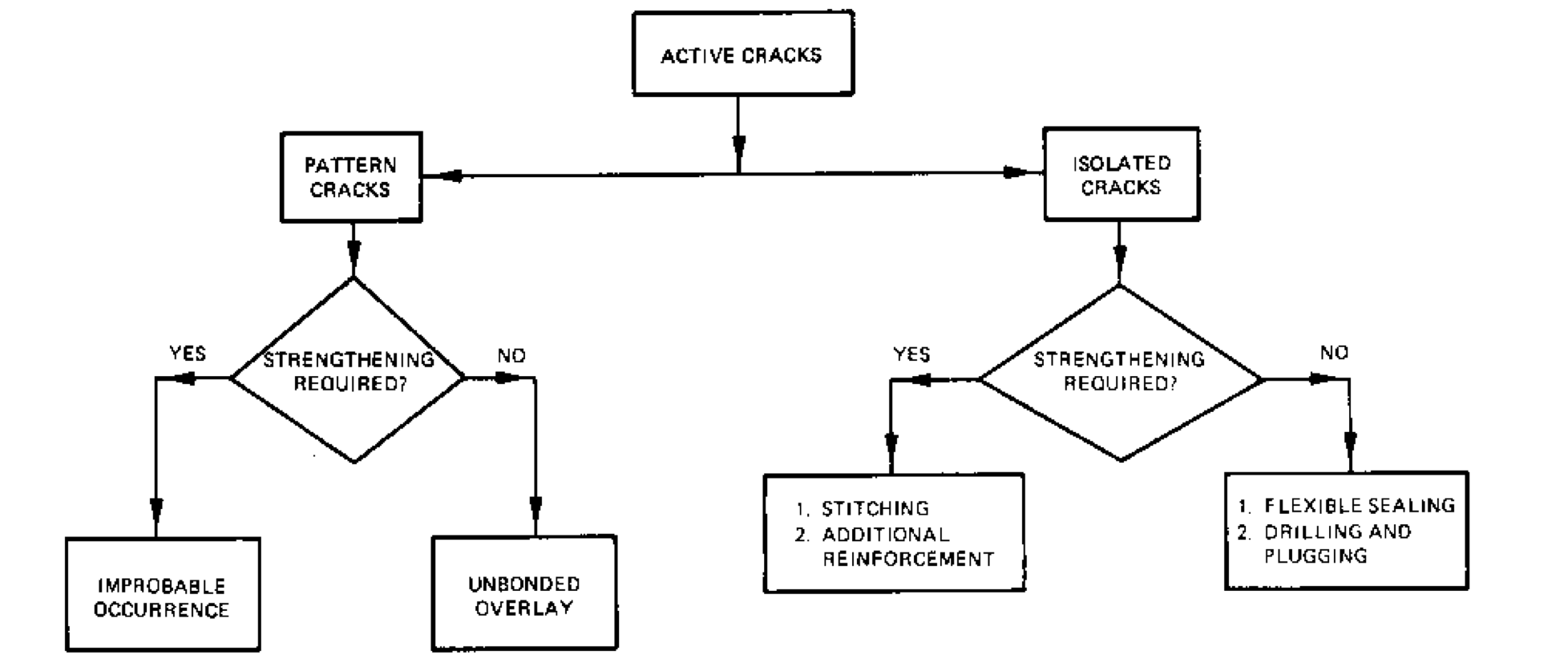| 1. |
This course provides guidance on evaluating the condition of the concrete in a structure, relating the condition of the concrete to the underlying cause or causes of that condition, selecting an appropriate repair material and method for any deficiency found, and using the selected materials and methods to repair or rehabilitate the structure. |
|
|
True |
|
|
False |
| 2. |
A visual inspection of the exposed concrete is the first step in an on-site examination of a structure. The purpose of such an examination is to locate and define areas of distress or deterioration. |
|
|
True |
|
|
False |
| 3. |
Spalling is defined as "the movement of water or other fluids through pores or interstices." |
|
|
True |
|
|
False |
| 4. |
The following physical and mechanical tests are generally performed on concrete cores:
- Density.
- Compressive strength.
- Modulus of elasticity.
- Poisson’s ratio.
- Pulse velocity.
- Direct shear strength of concrete bonded to foundation rock.
- Friction sliding of concrete on foundation rock.
- Resistance of concrete to deterioration caused by freezing and thawing.
- Air content and parameters of the air-void system.
|
|
|
True |
|
|
False |
| 5. |
A crack survey is an examination of a concrete structure for the purpose of locating, marking, and identifying cracks and determining the relationship of the cracks with other destructive phenomena |
|
|
True |
|
|
False |
| 6. |
A stability analysis is often performed as part of an overall evaluation of the condition of a concrete structure. |
|
|
True |
|
|
False |
| 7. |
Failure to follow specified procedures and good practice or outright carelessness may lead to a number of conditions that may be grouped together as construction errors. |
|
|
True |
|
|
False |
| 8. |
Shrinkage is caused by the loss of moisture from concrete. It may be divided into two general categories: that which occurs before setting (plastic shrinkage) and that which occurs after setting (drying shrinkage). |
|
|
True |
|
|
False |
| 9. |
The following properties should be considered before any material is selected for use on a repair or rehabilitation project:
- Compressive strength.
- Modulus of elasticity.
- Coefficient of thermal expansion.
- Adhesion.
- Drying shrinkage.
- Creep.
- Permeability.
|
|
|
True |
|
|
False |
| 10. |

Figure 1.A
What does figure 1.A illustrate about?
|
|
|
Selection of repair method for active cracks |
|
|
Typical information included on a drill log for concrete core |
|
|
Factors affecting the durability of concrete repair systems |
|
|
None of the above |
| 11. |
Shrinkage-compensating concrete is an expansive cement concrete, which is used to minimize cracking caused by drying shrinkage in concrete slabs, pavements, and structures. |
|
|
True |
|
|
False |
| 12. |
Drypacking is a process of ramming or tamping into a confined area a low water-content mortar. Because of the low w/c material, there is little shrinkage, and the patch remains tight and is of good quality with respect to durability, strength, and water tightness. |
|
|
True |
|
|
False |
| 13. |
Crack arrest techniques are those procedures that may be used during the construction of a massive concrete structure to stop crack propagation into subsequent concrete lifts |
|
|
True |
|
|
False |
| 14. |
Precast concrete is a form of construction, where concrete is cast in a reusable mould or “form” which is then cured in a controlled environment, transported to the construction site and lifted into place. |
|
|
True |
|
|
False |
| 15. |
Repairing deteriorated concrete is much easier and more economical than preventing concrete deterioration. |
|
|
True |
|
|
False |
| 16. |
Concrete stains can be removed with several methods including brushing and washing, steam cleaning, water blasting, abrasive blasting, flame cleaning, mechanical cleaning, and chemical cleaning. |
|
|
True |
|
|
Flase |
| 17. |
Coatings and sealers cannot be used to reduce the water penetrating into concrete. |
|
|
True |
|
|
False |
| 18. |
Concrete cutoff walls, sometimes referred to as diaphragm walls, are cast-in-place structures used to provide a positive cutoff of the flow of water under or around a hydraulic structure. |
|
|
True |
|
|
Flase |
| 19. |
The use of precast concrete in repair and replacement of civil works structures has increased significantly in recent years and the trend is expected to continue. |
|
|
True |
|
|
False |
| 20. |
A concrete repair report should include discussions of problems encountered in each phase of the repair work, effectiveness of the repair materials and techniques. |
|
|
True |
|
|
False |
|